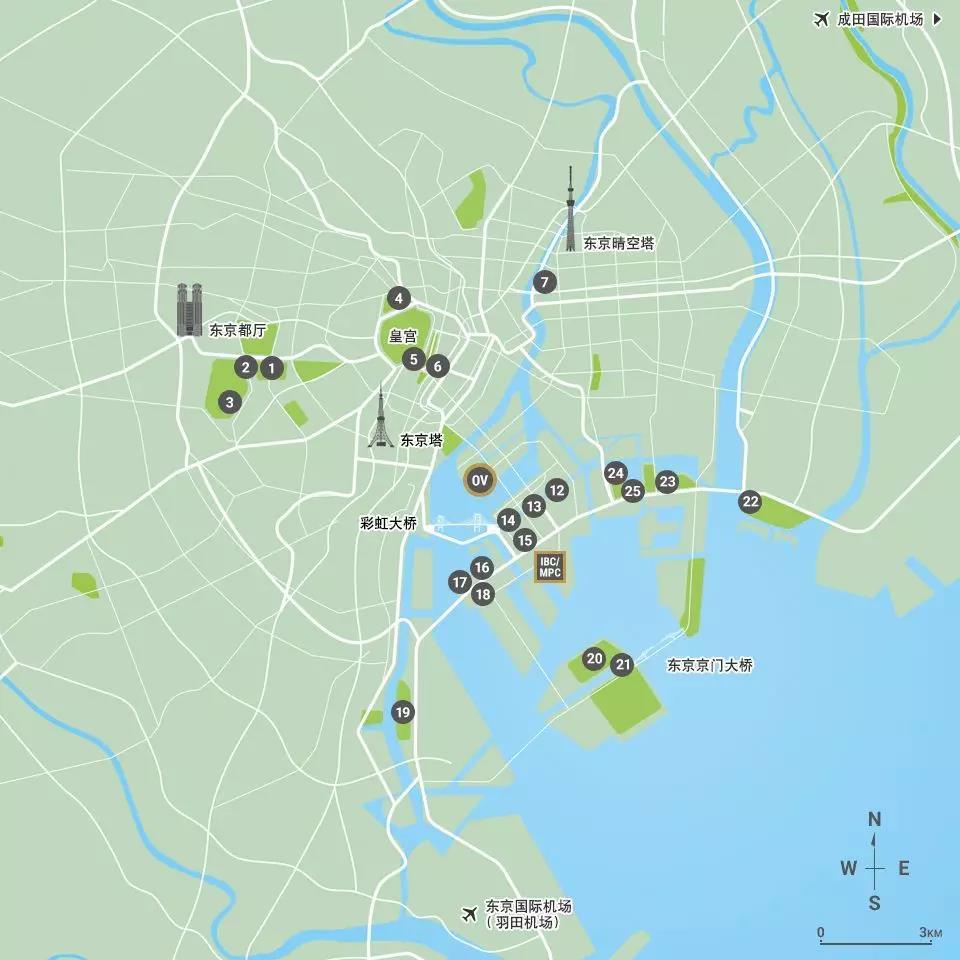1. Tokyo National Stadium

The Tokyo New National Gymnasium was converted from an old gymnasium originally built in 1958. It was once the main stadium of the Tokyo Olympics in 1964. After refurbishment, it can accommodate 68,000 spectators, and many sports events such as the opening and closing ceremonies of the Olympic Games and football matches will be held here.
Japan has been preparing for this for 7 years, and the total budget has exceeded 1.7 trillion yen; not only has it lavishly built 7 new competition venues, but also comprehensively renovated and transformed a large number of old stadiums. The arena is one of the key points of the renovation project.
Japan National Stadium, 1964
The proposal for the new arena was originally won by Zaha Hadid Architects, but the proposal was cancelled due to budgetary issues.
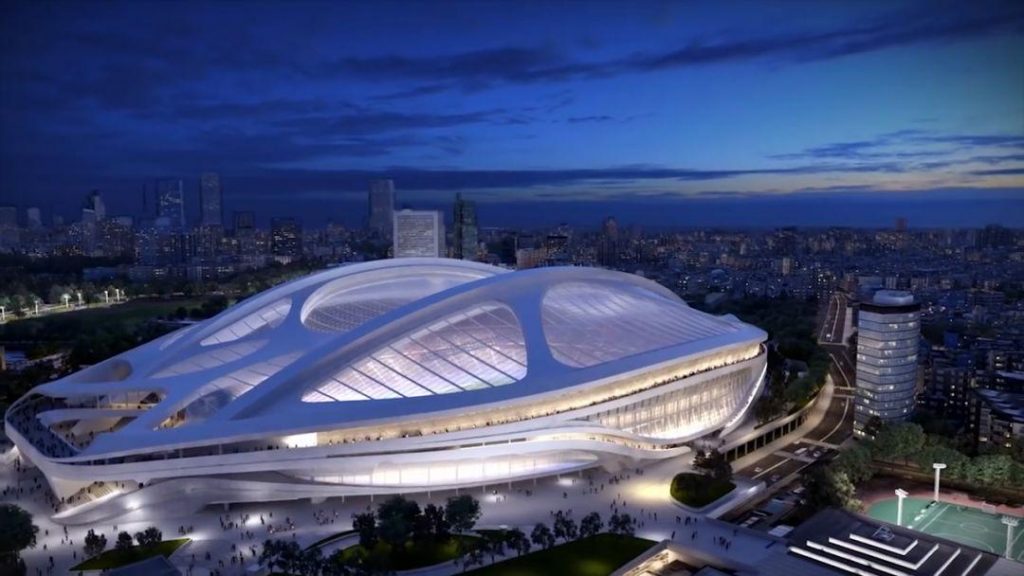
Finally, the project was handed over to the Japanese architect Kengo Kuma to design, cost 186.5 billion yen, and was completed in November 2019.
The total construction area reached 194,000 square meters, the original building was demolished, and the runway was expanded.
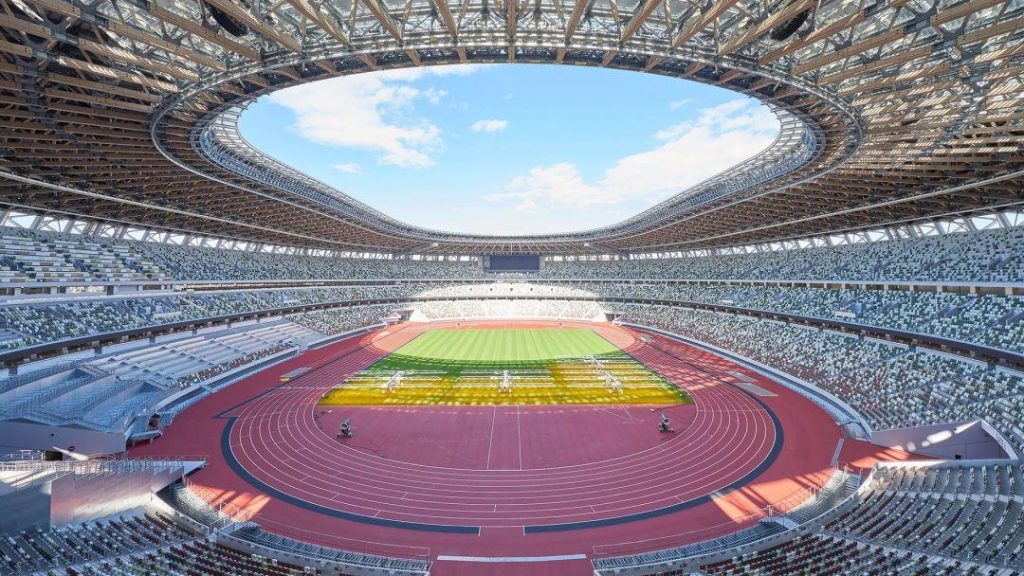
The surface of the wooden structure is dotted with green plants, which represents Kengo Kuma’s persistent pursuit of natural materials.
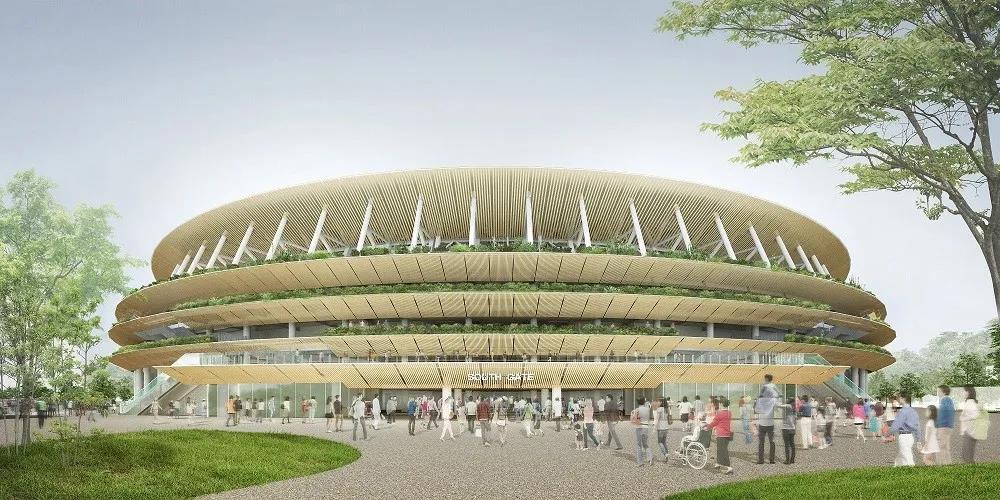
The most eye-catching part of the project is naturally the white roof of the stadium, which looks like a large piece has not been built yet.
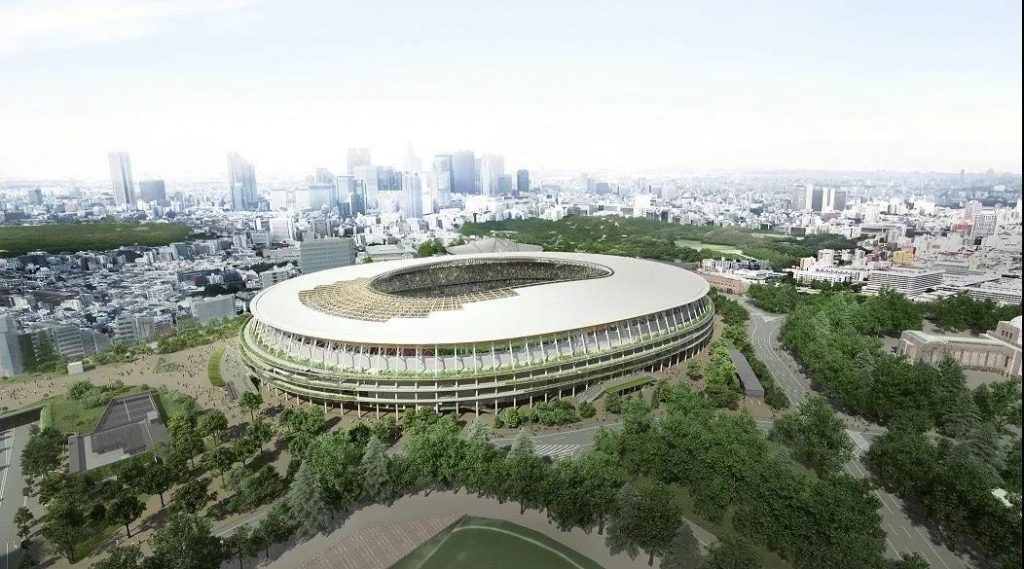
Arena renderings
In fact, it is the highlight of Kengo Kuma’s design-calculating the solar coverage rate through a computer, replacing the south-facing roof material with strengthened glass bricks, so that the natural lawn in the venue can absorb the sunlight.
The light spilling into the arena through the glass bricks is like sunlight falling through the cracks of branches and leaves, and the audience will also feel at ease in the forest.
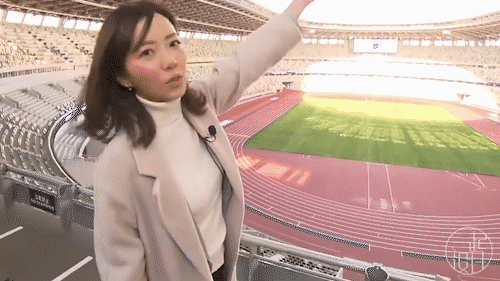
In addition to his paranoia of light, Kengo Kuma insisted on using Japanese domestic wood to construct the entire stadium. The stadium facade is composed of four overlapping wooden eaves. The entire stadium is designed as a huge collection of slender wooden blocks.
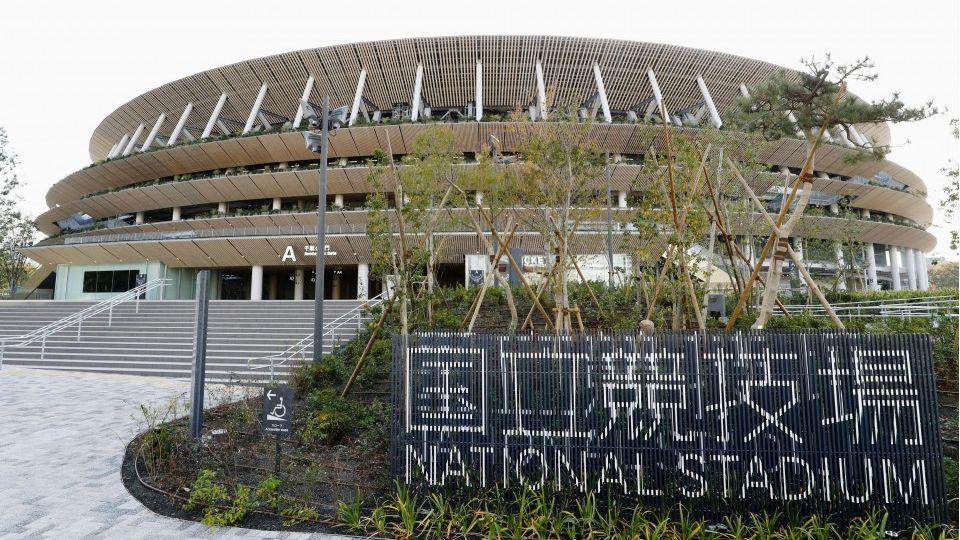
The eaves are inspired by the construction craftsmanship of Japanese temple eaves. The bottom of each eaves is covered with wooden shutters. From a distance, there are neat and slender gaps between the wooden slats, with strong Japanese characteristics.
According to reports, all the wood used for construction is taken from 47 prefectures and cities in Japan, which can be described as a collection of the wisdom and strength of the Japanese people.
The scale and height of the eaves on the top floor of the venue are larger than those of the other floors, in order to better guide the airflow down into the auditorium. At the same time, a powerful blower is installed to create a comfortable watching environment.
At the same time, the designer also selected the color elements of fallen leaves from the perspective of the players, and designed the auditorium as a mosaic of different colors, rather than a single-color seat like the one in the sports venue.
This design, even if there are few people watching the game, seems to be full at first glance, and the players will not cause psychological pressure. Create an atmosphere of running and jumping in nature for the players.
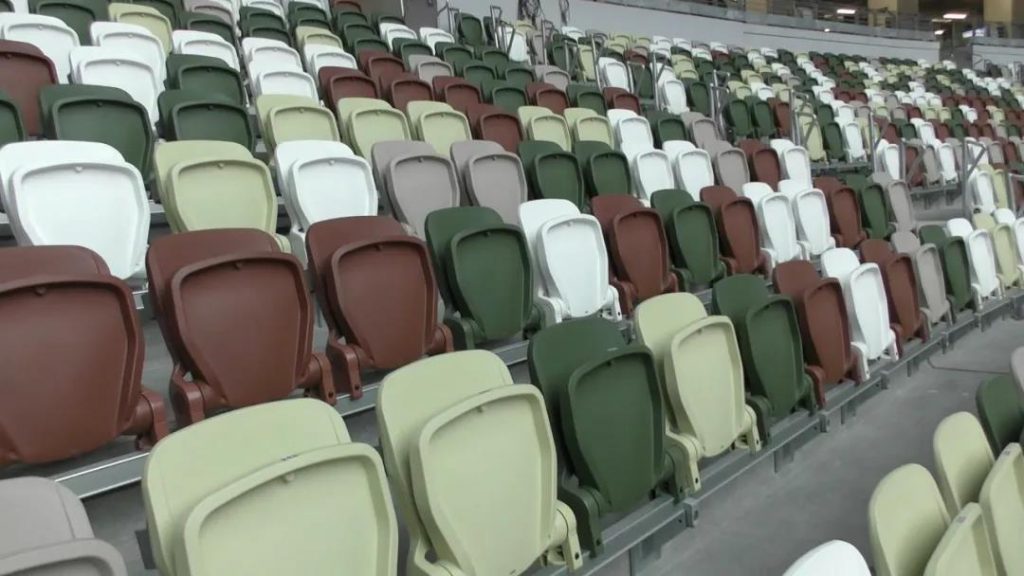
The interior of the venue was decorated with curved LED lights, symbolizing the free flow of wind.
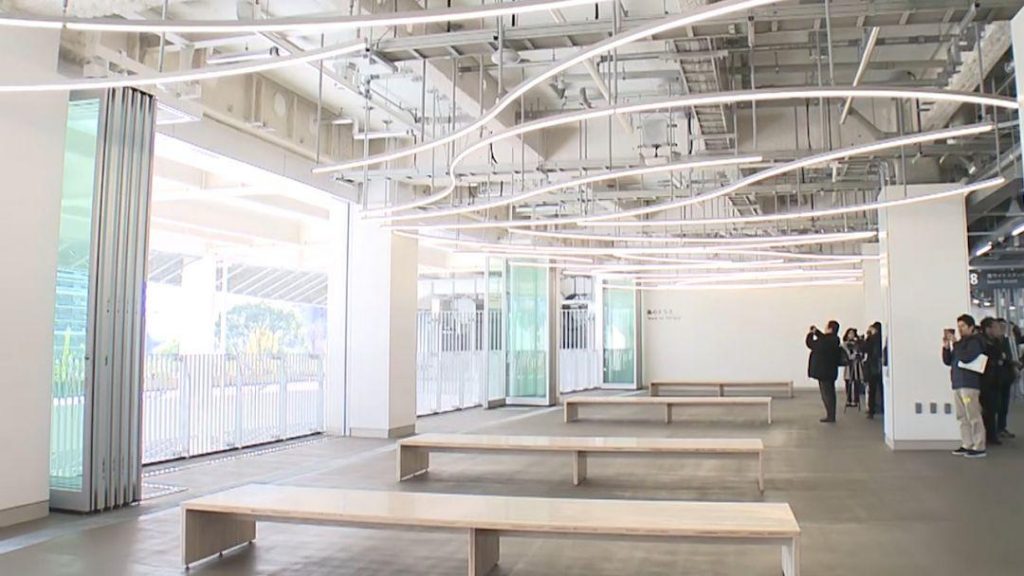
There are practical details designed for the disabled throughout the venue, such as the wheelchair parking spots in the picture below and the special handrails in the bathroom.
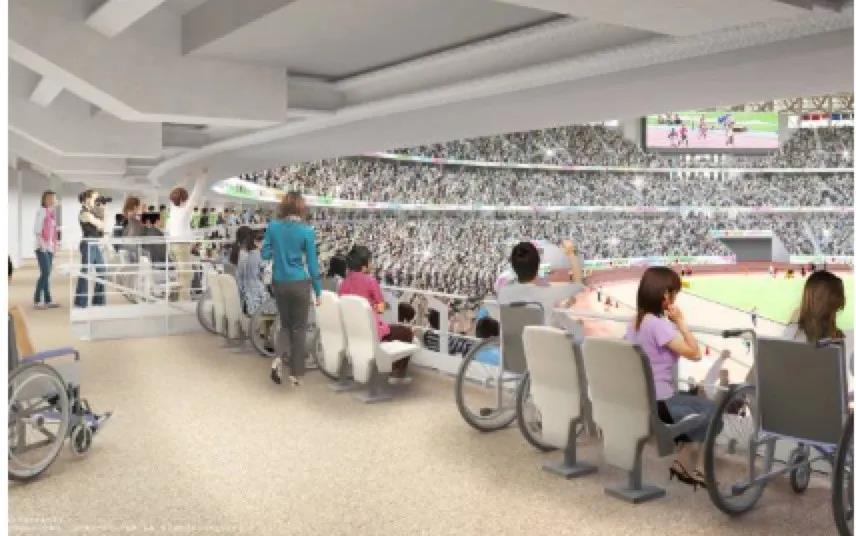
2. Athletes’ Village Plaza
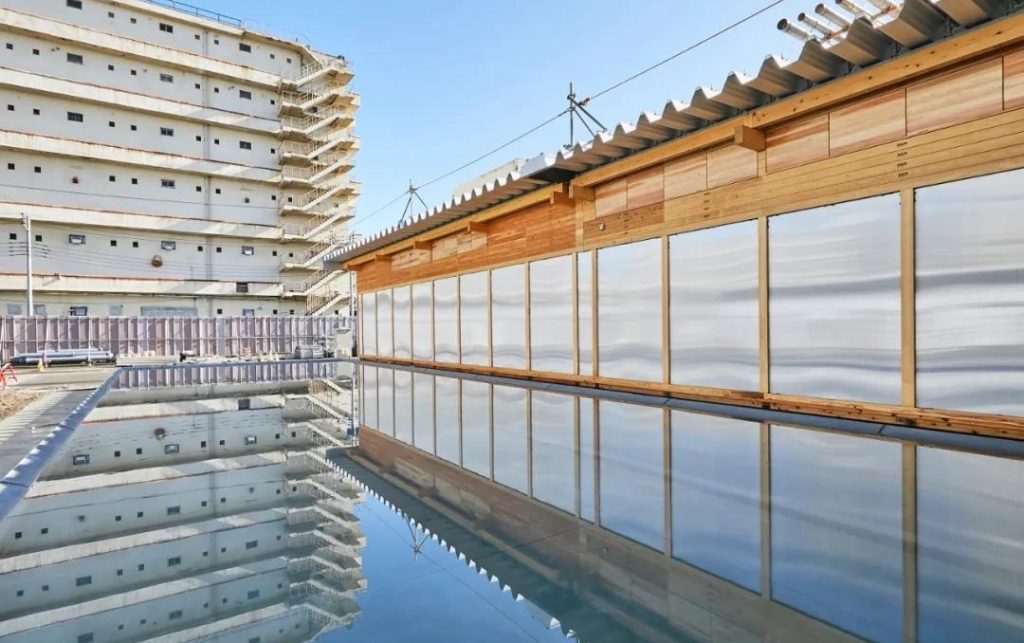
The Tokyo Olympic Village Plaza, which was just unveiled not long ago, is also the main facility of the Olympic Games. It is located in the waterfront area. The square covers an area of 5,300 square meters, including cafes, banks, infirmaries and other living places, costing 2.4 billion yen.
Said to be a square, in fact, a series of wooden structure bungalows with a roof, the exterior walls are made of glass.
Adhering to the concept of sustainable development and environmental protection, the project organizing committee “borrowed” approximately 40,000 pieces of wood from 63 cities in Japan to build the main structure of the Olympic Village Plaza.
The solid woods are stacked in a crisscross pattern to form typical Japanese ceilings and columns, representing the Japanese minimalist design aesthetics.
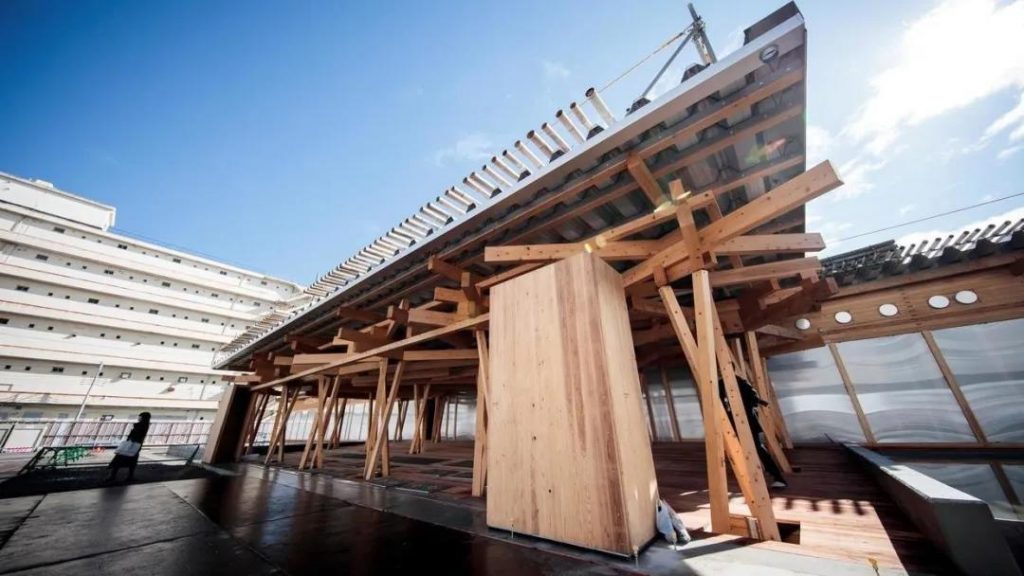
The wood is mostly common Japanese larch, Japanese cedar and Japanese cypress, etc. The name of the city is printed on each wood, and the clean ink characters and English signs reflect the meager contribution of these cities to the construction of the Olympic Games.
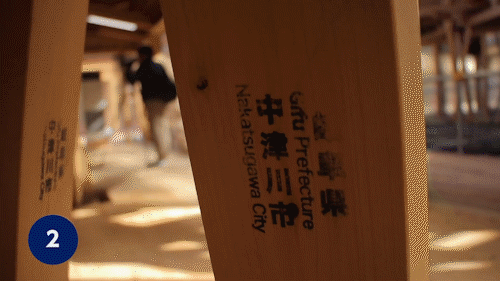
After it is completed, various activities such as the welcome ceremony for athletes will be held here, which can provide athletes with various life conveniences.
In fact, these woods can also be reused. After the Olympics, these woods will be removed and returned to the donated city intact for the construction of more public buildings.
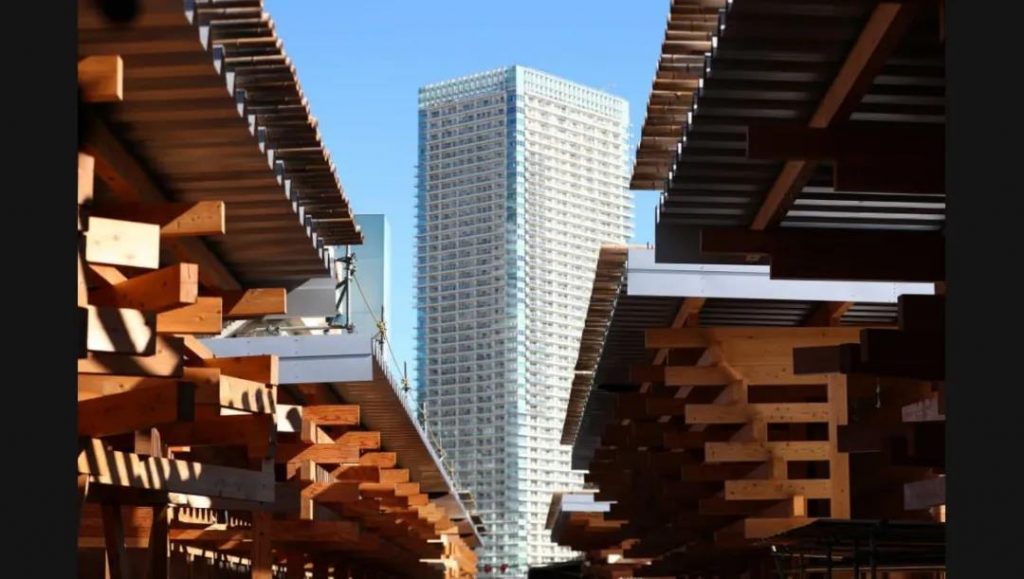
3. Ariake Gymnastics Center
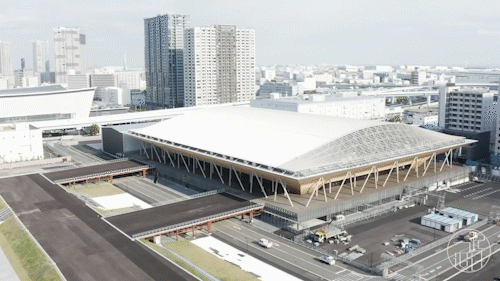
Events: Gymnastics, Rhythmic gymnastics
Address: Ariake, Koto-ku, Tokyo (Ariake Kita area)
Wooden buildings are the main architectural feature of the 2020 Olympic Games, and the new Ariake Gymnastics Center is the most typical example.
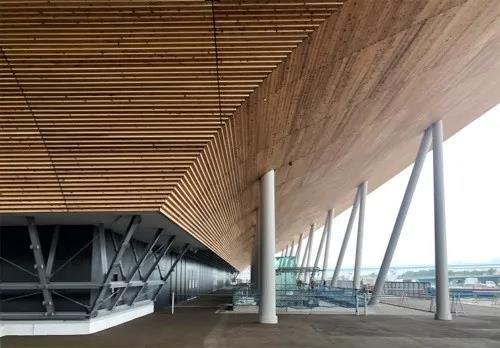
The sloping exterior wall is made up of pieces of wooden boards, and when viewed from below, it is very compact and beautifully curved. Inspired by the balcony structure of traditional Japanese houses.
It not only uses wood in the roof frame, the main auditorium and the facade of the building, but also creates the largest arched wooden roof in the world, 120 meters long, 90 meters wide, and about 30 meters high.
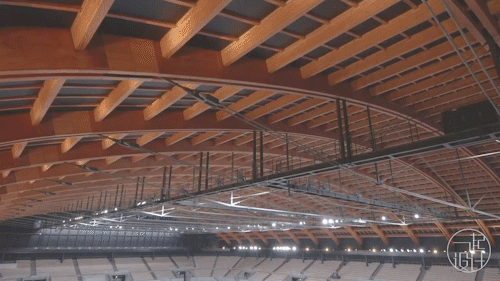
The arched wooden beams are made of Japanese cedar, and the hard woods intersect vertically and horizontally, creating a continuous and open interior space in one go.
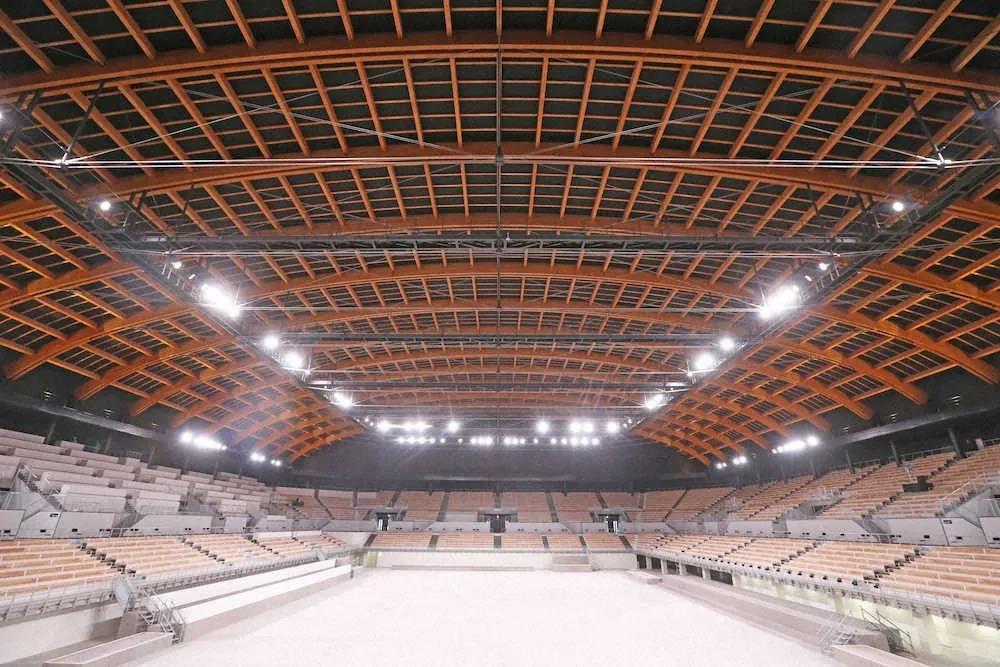
Such a large wooden beam does not even have a pillar, which is incredible when you think about it. It is actually a “composite wood beam-column structure” composed of a central beam and column and cantilever trusses on both sides, and the “lifting method” is used for construction.
Even the seats of the auditorium are made of pure wood, made of Japanese native cedar, creating a warm space surrounded by trees.
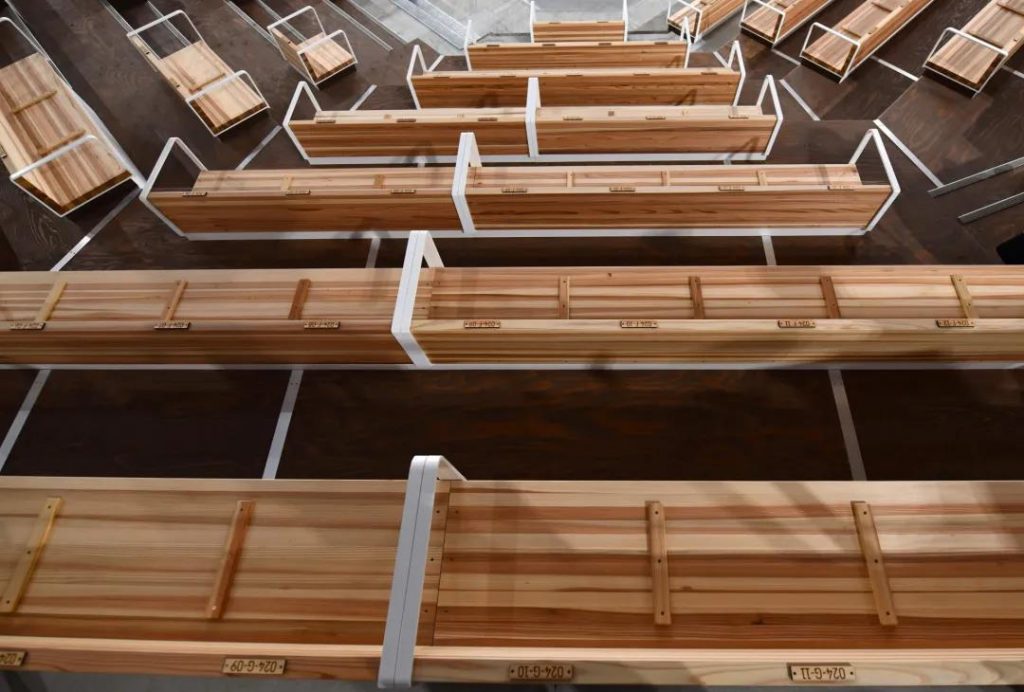
The 12,000-person venue will host gymnastics, rhythmic gymnastics and trampoline competitions during the Olympic Games.
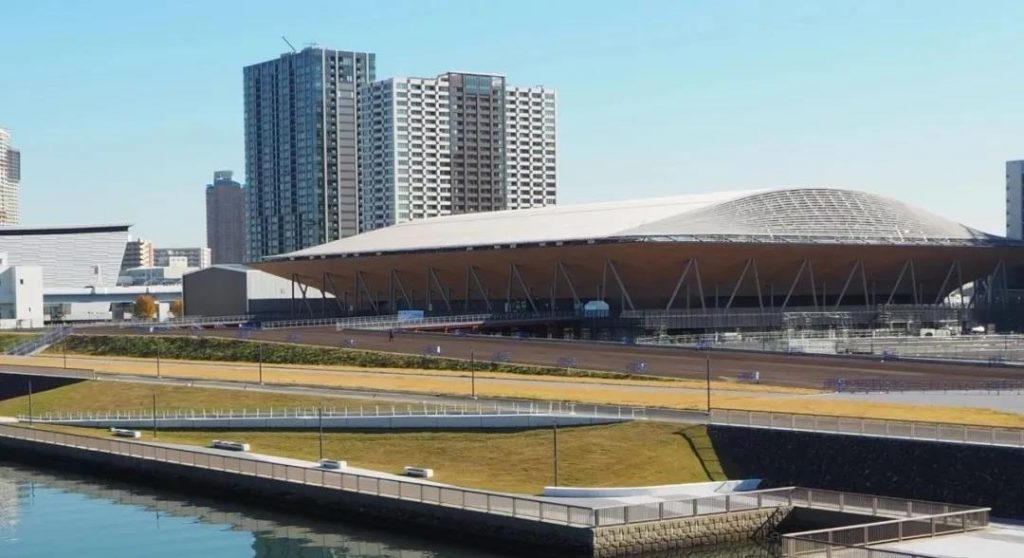
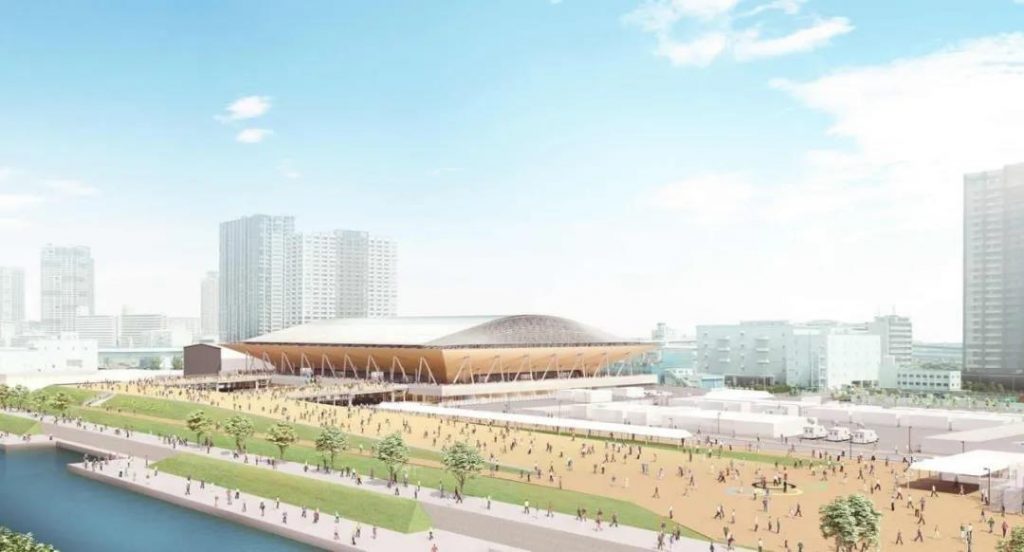
4. Ariake Arena
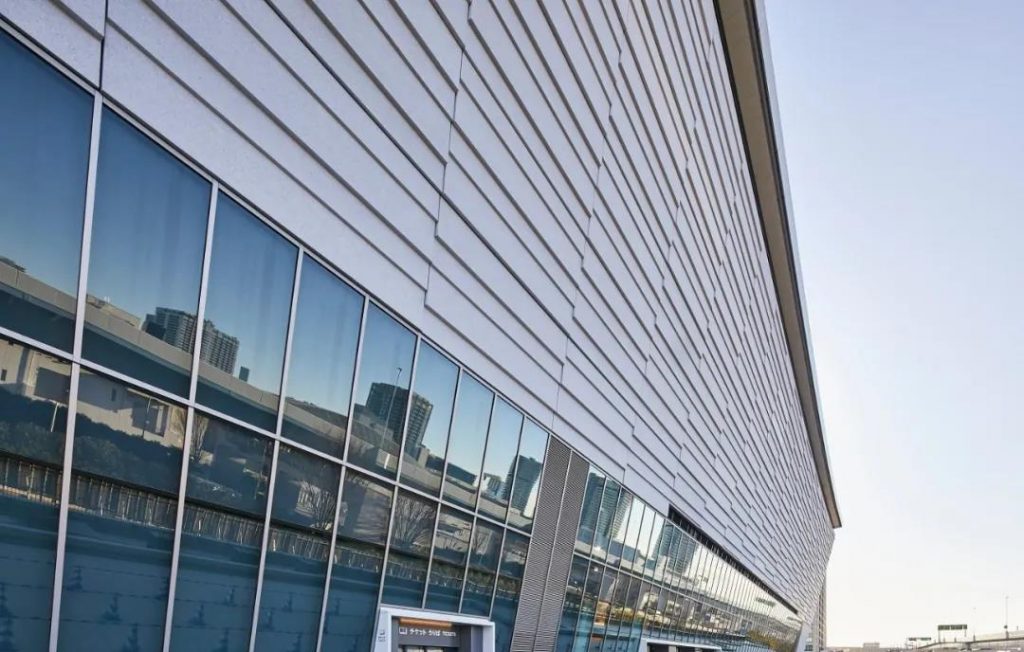
Events: Volleyball, Tennis
Address: Ariake 1-chome, Koto-ku, Tokyo (Ariake Kita area)
Also in the northern part of Ariake District, the newly-built competition venue also includes the Ariake Arena. Construction started in 2017 and completed in December 19th. The construction area of the project is approximately 25,500 square meters, and the total construction cost is approximately 37 billion yen (US$1.46 billion). The facade is composed of glass curtain walls and white panels, and the roof of the venue is concave to form a beautiful arc.
The main stadium area is about 4,100 square meters, enough to accommodate four volleyball and three basketball courts. A total of 800 cubic meters of Japanese wood is used in the interior hall, ceiling and walls, and the natural textures echo each other, highlighting the unique natural charm of Japanese style.
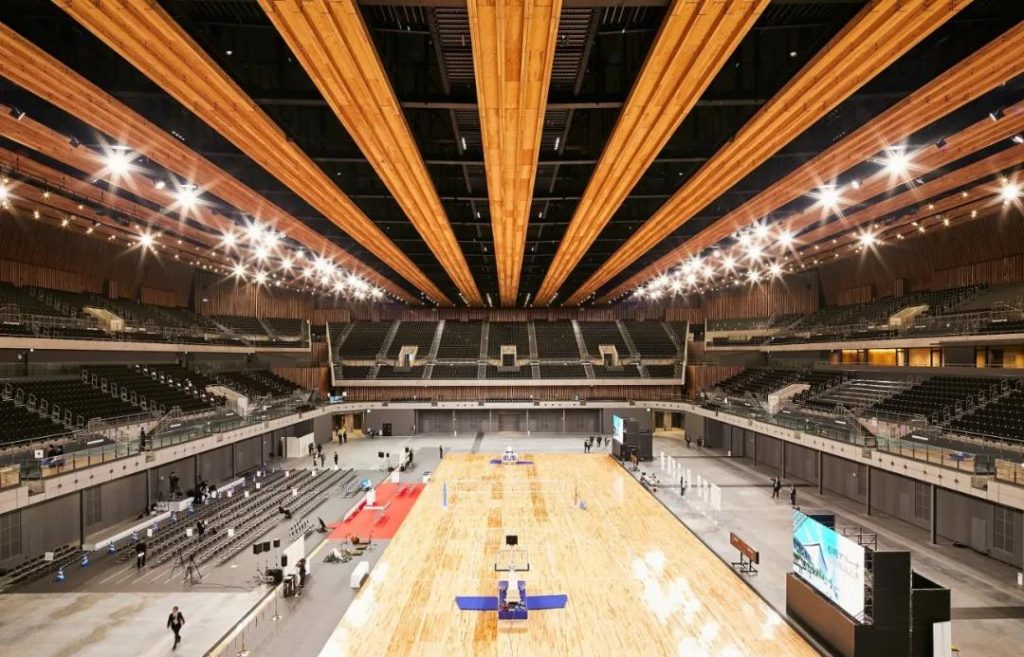
The outside of the semi-open corridor is supported by concrete columns, and the top and side walls are decorated with a large number of wooden boards.
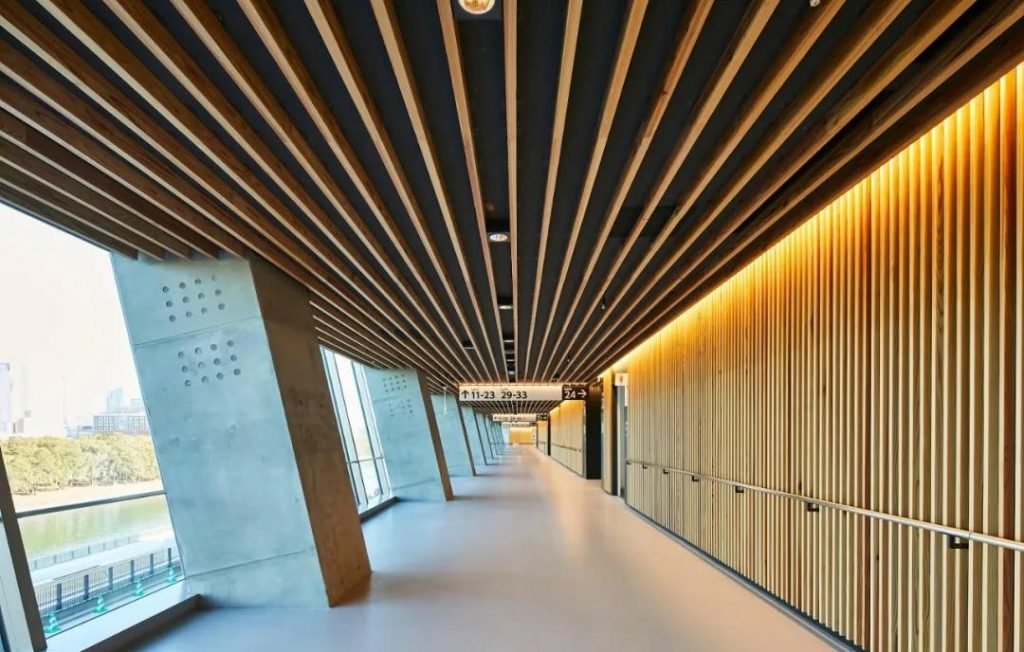
The Ariake Arena can accommodate up to 15,000 spectators and will be used for volleyball matches in the Olympics and wheelchair basketball in the Paralympics.
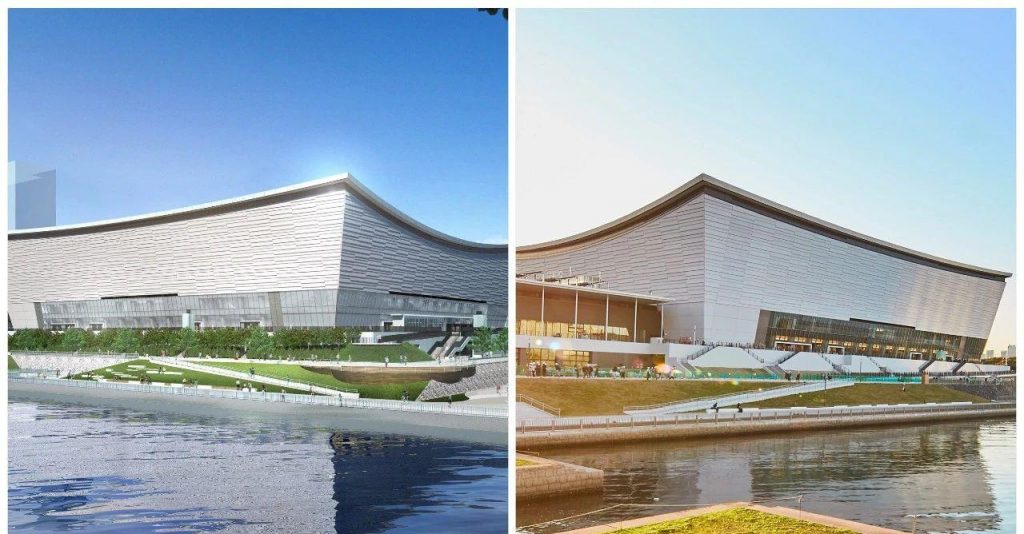
5. Tokyo Aquatics Centre
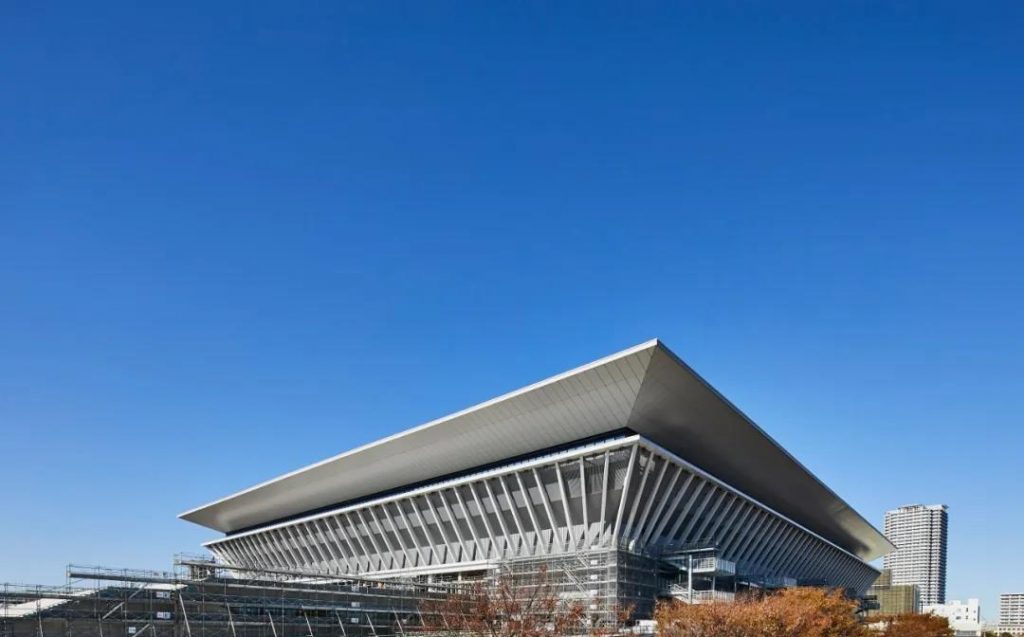
Events: Swimming, Diving and Synchronized Swimming
Address: Tatsumi 2-chome, Koto-ku, Tokyo
Another highlight of the new venue is the Tokyo Aquatic Center, which was newly constructed in Tatsumori Nomori Seaside Park. It is four stories high and cost 56.7 billion yen (US$523 million).
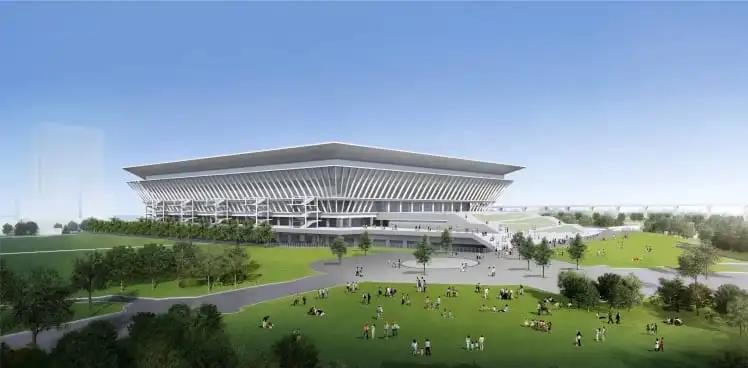
The huge white roof weighs 7,000 tons and is 10 meters thick. It was built in advance and then raised to its current position. The white volume is very light against the blue sky. The exterior wall of the building is covered with a row of upward-sloping louvers, echoing the roof.
The main pool has a movable wall, which can convert a 50-meter large pool into two 25-meter standard pools. The depth of the bottom of the pool can also be adjusted.
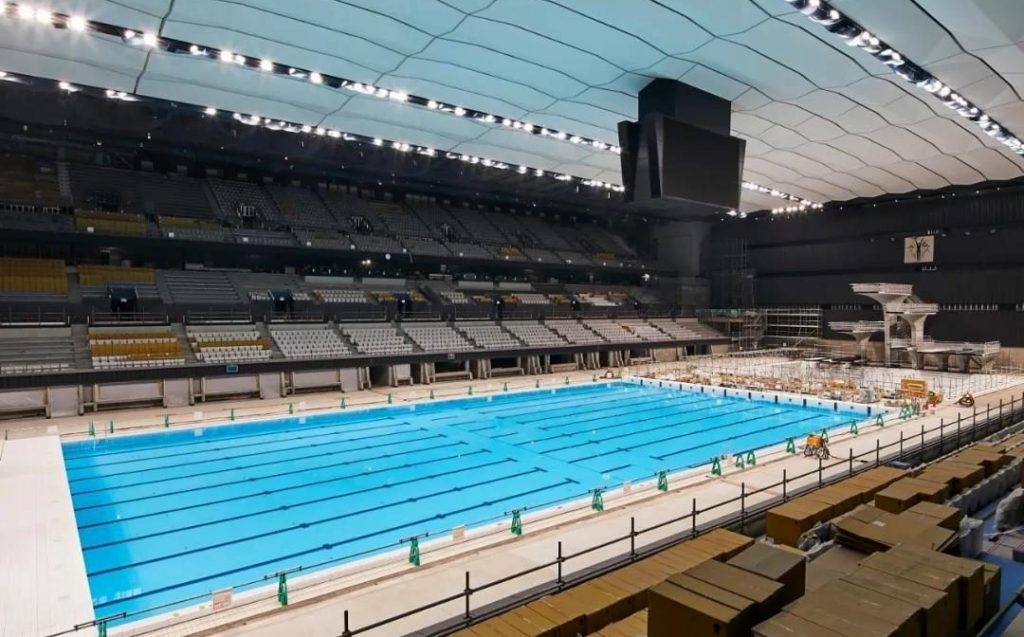
The center will be used for swimming, diving and synchronized swimming during the Olympic Games and can accommodate 15,000 spectators.
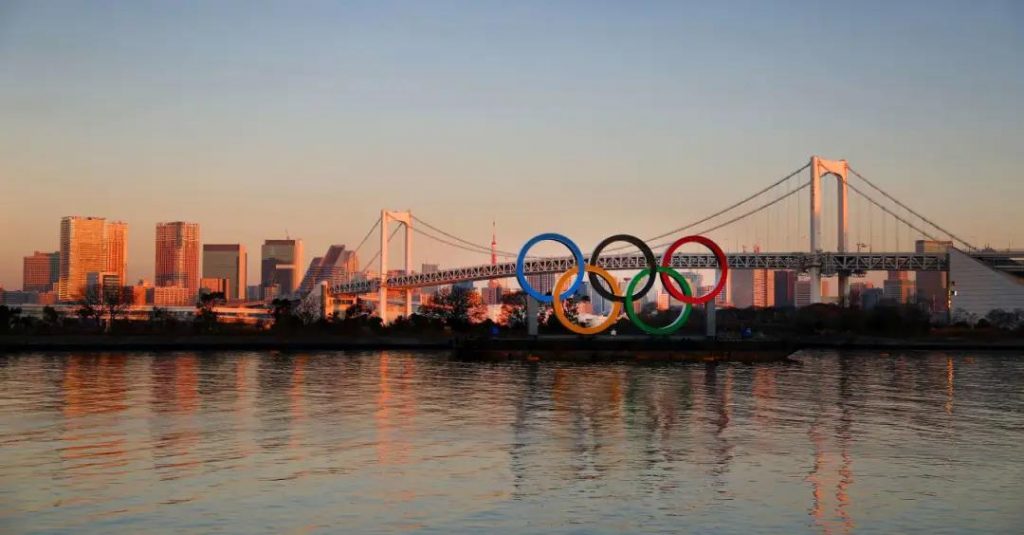
There are a total of 38 venues for the 2020 Tokyo Olympics. In addition to the above-mentioned new venues, there are also many old sports facilities that have been incorporated into use, including classic buildings designed by masters.
6. Yoyogi National Stadium
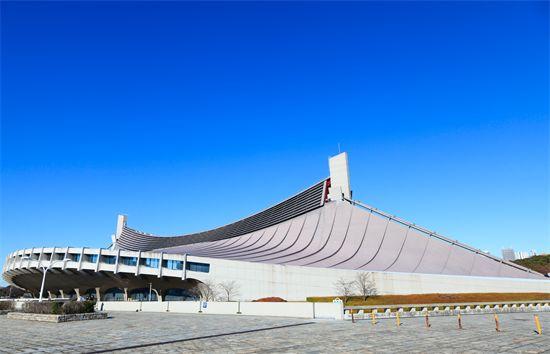
Events: Handball
Address: 2-1-1, Shinnan, Shibuya-ku, Tokyo
Yoyogi Gymnasium is the pinnacle of the famous Japanese architect Kenzo Tange. It is world-famous for its suspended roof design.
Its main structure is formed by overlapping two half-moon-shaped curved blocks, and the two ends of the intersection converge from bottom to top to the top of the overhanging pillar.
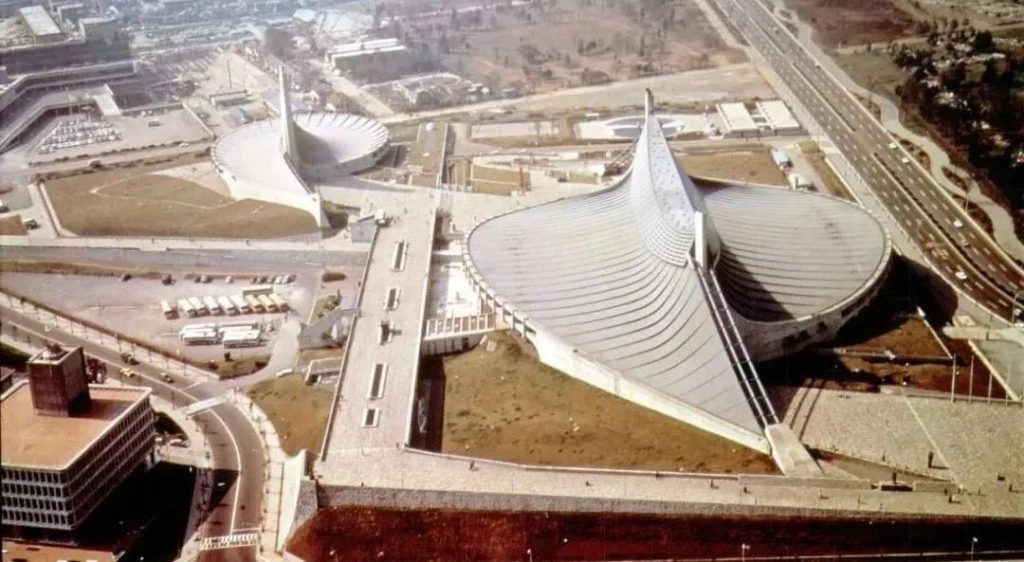
7. Nippon Budokan
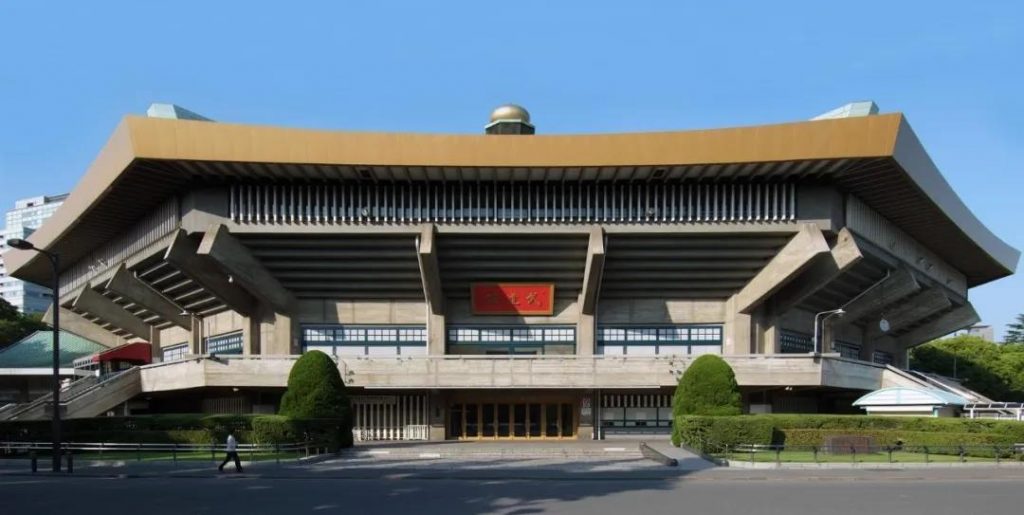
Events: Judo, Karate
Address: Kitanomaru Park 2-3, Chiyoda-ku, Tokyo
Another ancient venue is the Nippon Budokan, which hosted the first judo competition at the 1964 Olympics, symbolizing the spirit of Japanese martial arts. Its octagonal roof shape is derived from the ancient Japanese temple “Yumemido”, but it has been criticized for being too traditional.
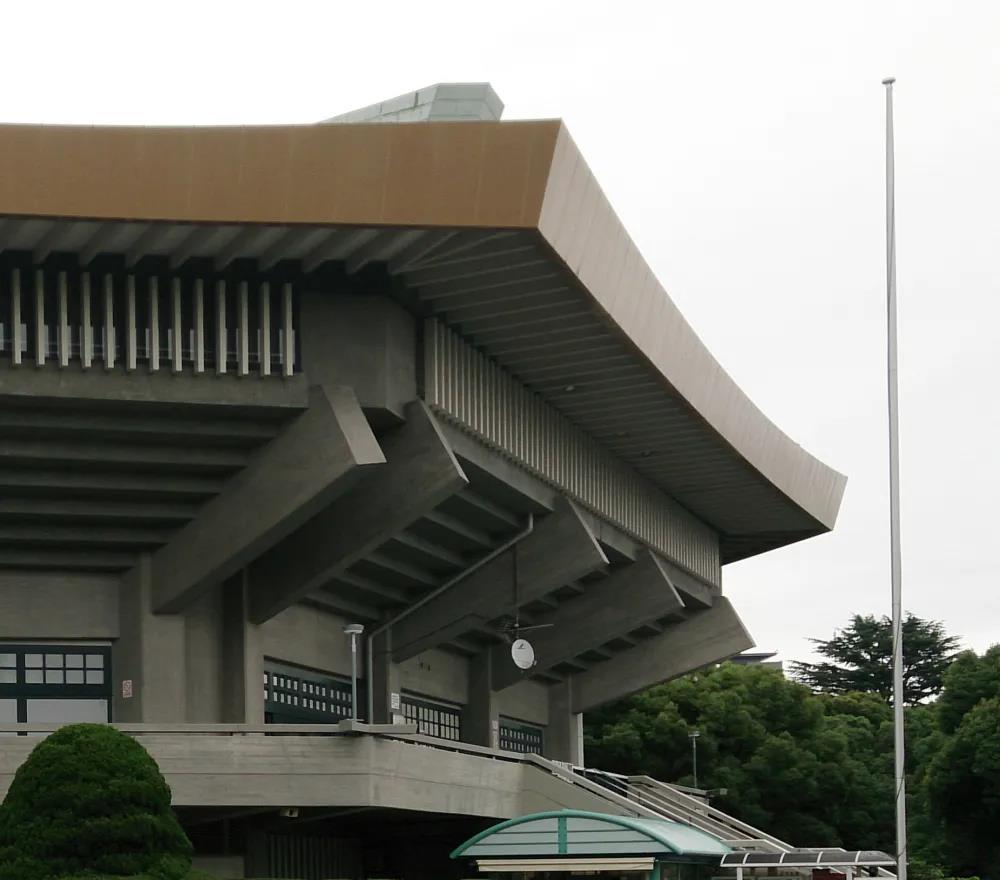
Now the Budokan has become an iconic performance venue, and Bob Dylan and The Beatles have both held unforgettable concerts here. Japanese celebrities and celebrities all regard it as their greatest honor to hold a concert here.
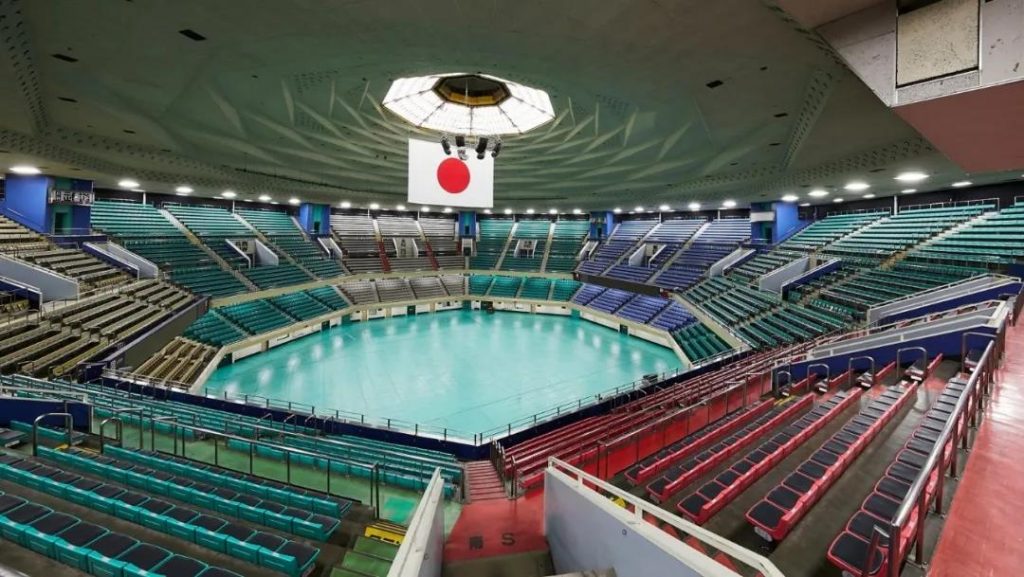
8. Sapporo Dome
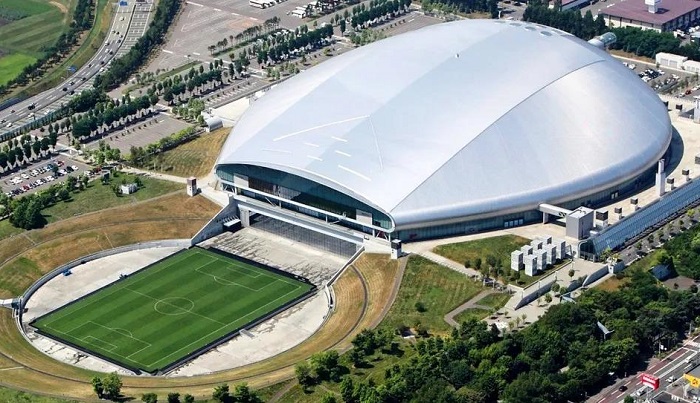
Events: Football
Address: Yogogaoka 1, Toyohira Ward, Sapporo City
The Sapporo Dome has the title of “Dome”, and the silver oval shape is very eye-catching. It is the only all-weather dome stadium in Japan with large-scale natural turf indoors. It can hold approximately 42,000 spectators.
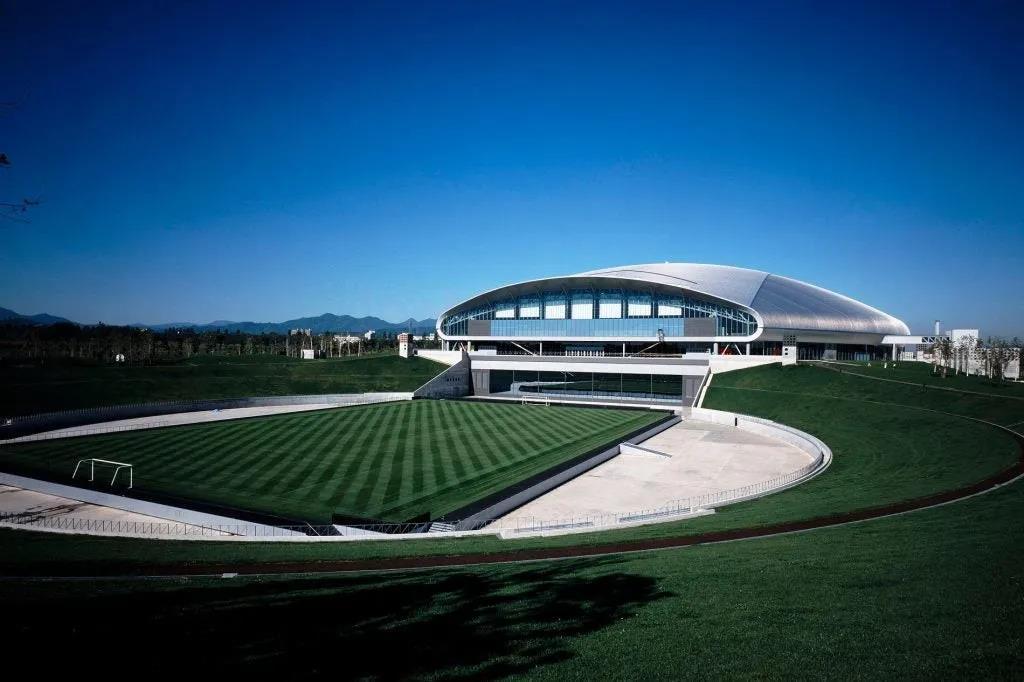
In addition to football, baseball and other games, it can also be used as an event facility for cultural exchanges.
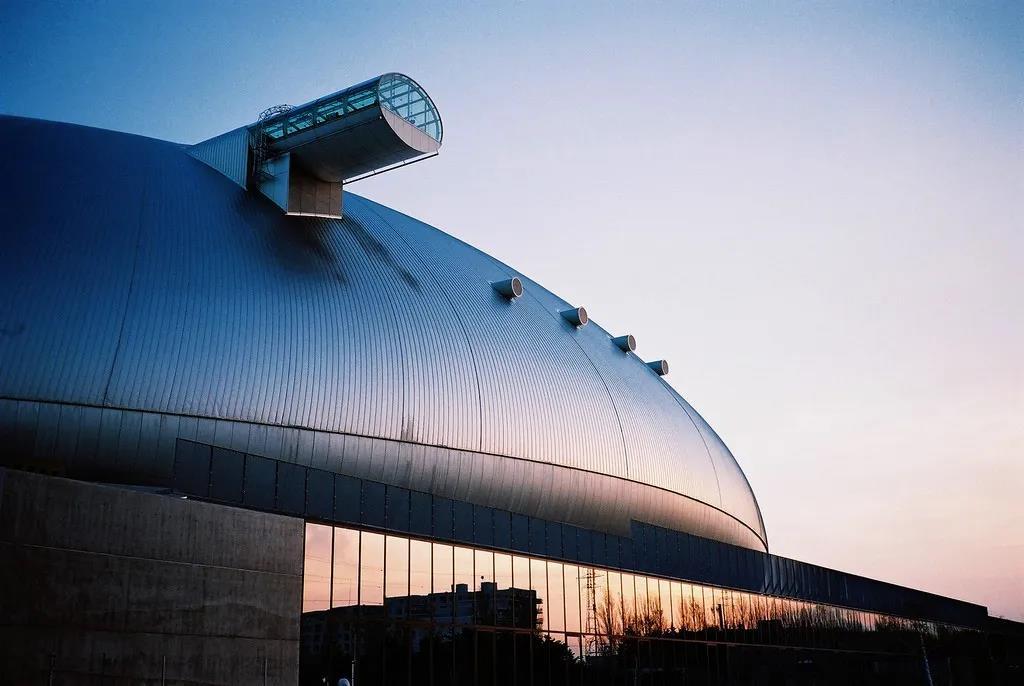
9. Yokohama Baseball Stadium
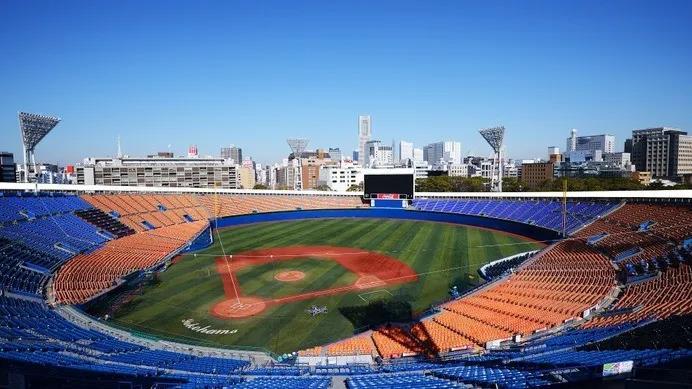
Event: Baseball, Softball
Address: Yokohama Park, Naka Ward, Yokohama City, Kanagawa Prefecture
Located in Yokohama Park, Kanagawa Prefecture, Yokohama Stadium is Japan’s first multi-purpose stadium. The venue has a huge circular shape with a total of seven floors, a construction area of 67,000 square meters, a total area of 171,000 square meters, and a cost of 60 billion yen. It took 3 years and 9 months to complete.
It can be used as a venue for athletics, rugby, baseball and other events, as well as large-scale concerts.10. Saitama Super Arena
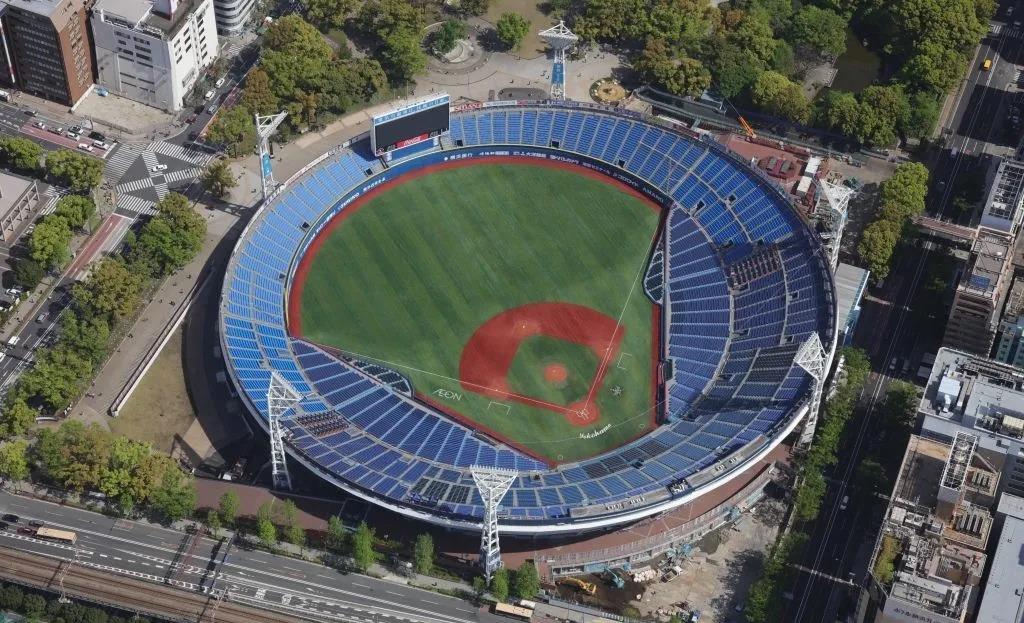
10. Saitama Super Arena
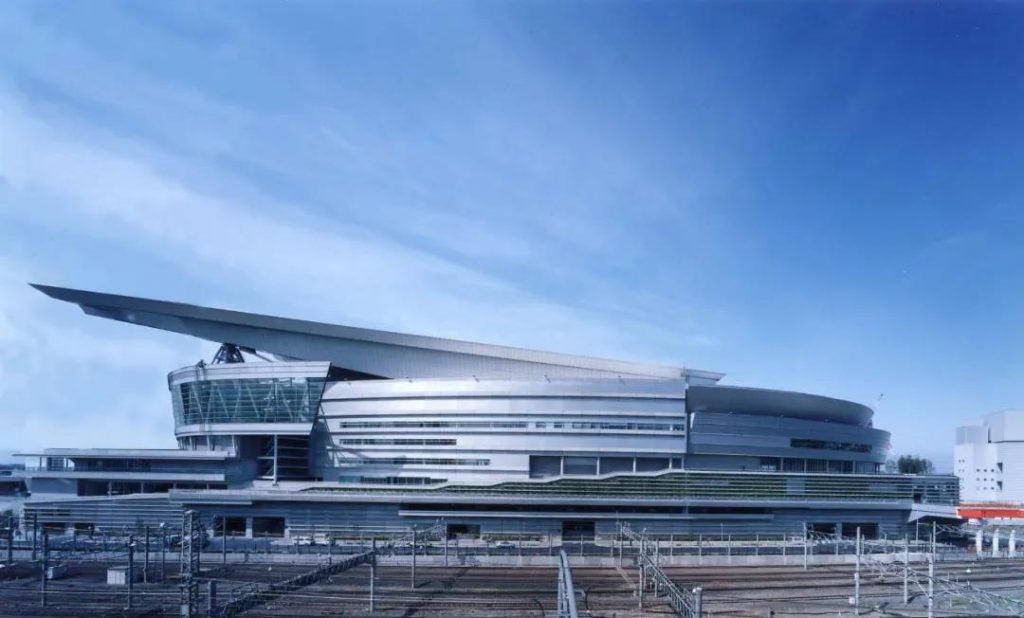
Event: Basketball
Transportation: JR Keihin Tohoku Line, Utsunomiya Line, Takasaki Line Saitama Shintoshin Station
The Saitama Super Arena is one of the largest multi-functional stadiums in Japan. There are huge arc-shaped movable blocks in the stadium, which can move a distance of 70 meters horizontally, so as to flexibly create a variety of venues to meet sports events and The different needs of commercial performances.
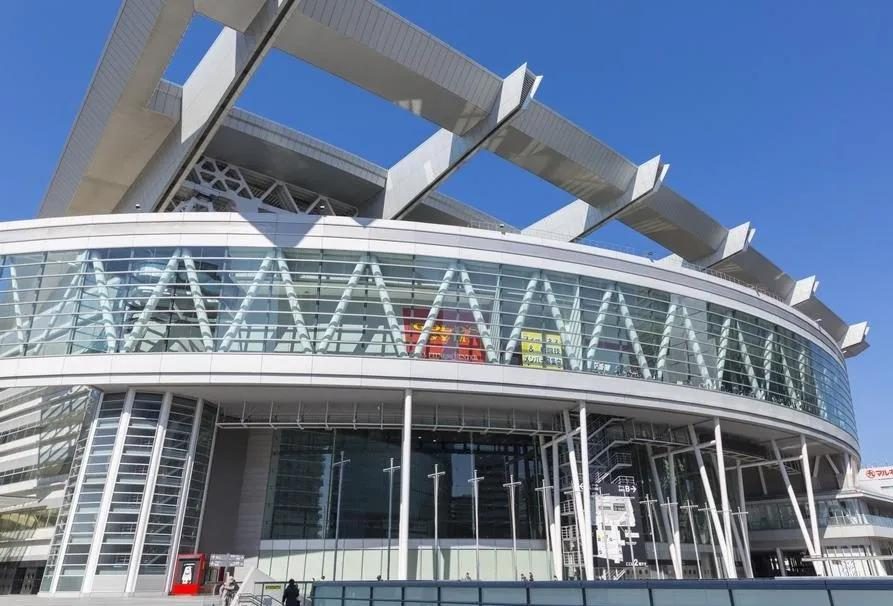
It is the only stadium in Japan that is eligible for American football matches, with a maximum of 37,000 seats.
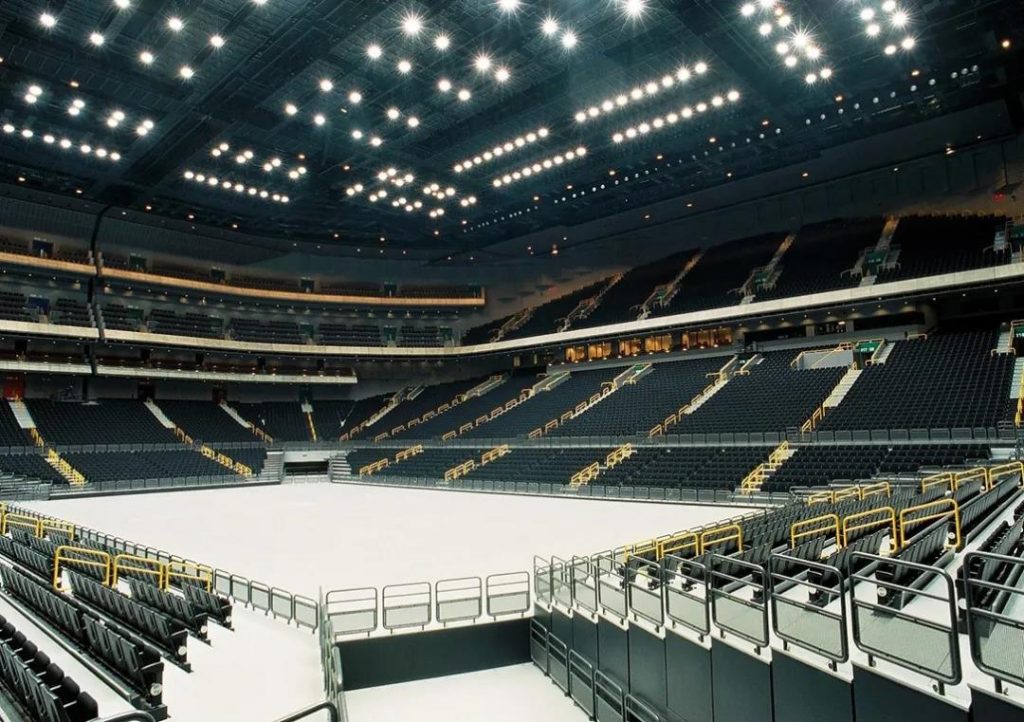
11. Musashino Forest Sport Plaza
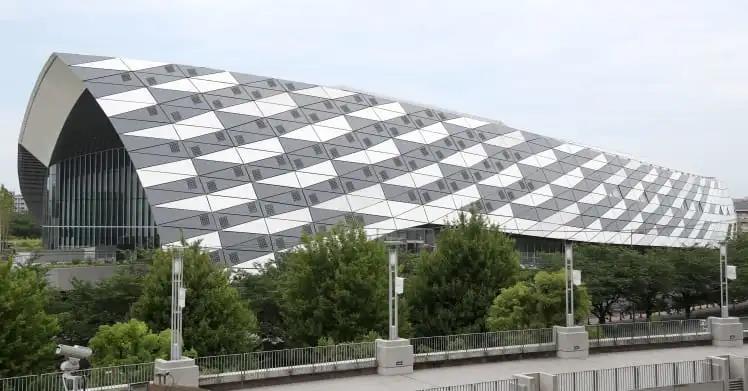
Events: Badminton, Modern Pentathlon (fencing)
Address: 11, 290 Nishimachi, Chofu City, Tokyo
The Musashino Forest Sports Plaza is close to the Tokyo Stadium and has a streamlined appearance. The top is composed of triangular composite panels to form a black and white geometric pattern. The internal ceiling also uses this geometric element.
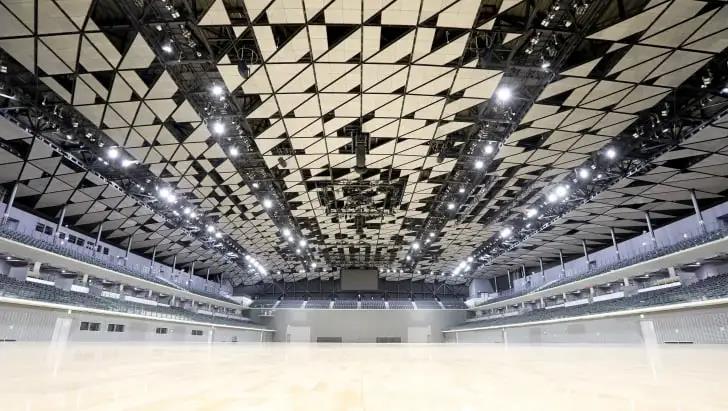
12. Miyagi Stadium
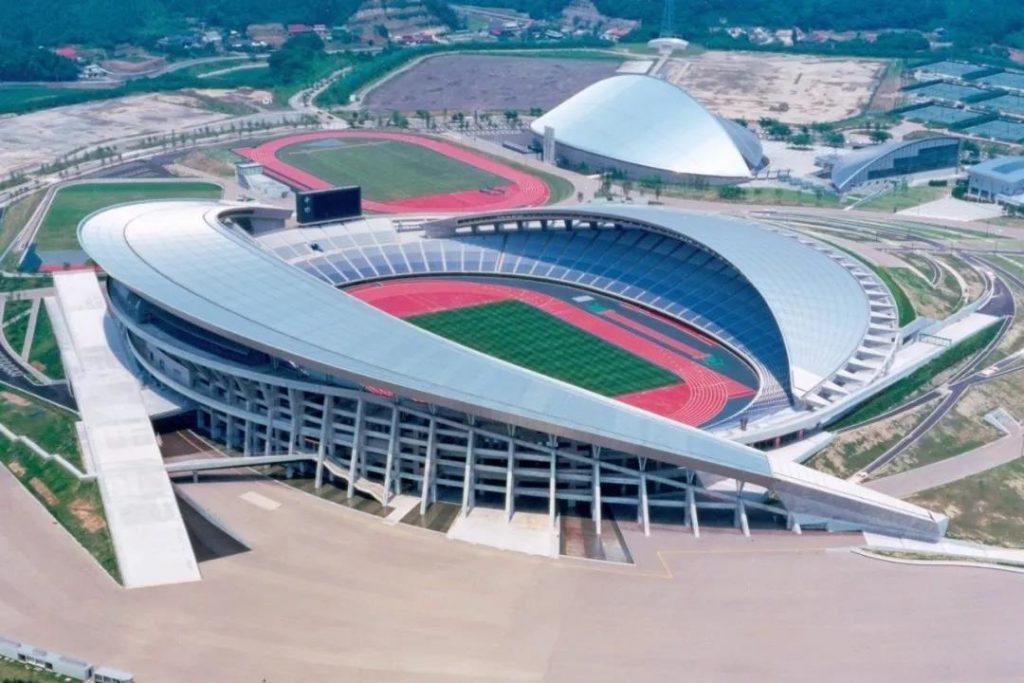
Project: Football
Address: 40-1 Date, Siya City, Hifu Town, Miyagi County, Miyagi Prefecture
The Miyagi Gymnasium is located in Miyagi Prefecture, Japan and is mainly used for track and field matches and football matches. The roof covering the auditorium of the stadium is half moon shaped, reminiscent of the two half moons decorated on the helmet of Date Masamune, the feudal lord who ruled the place in the 16th century.
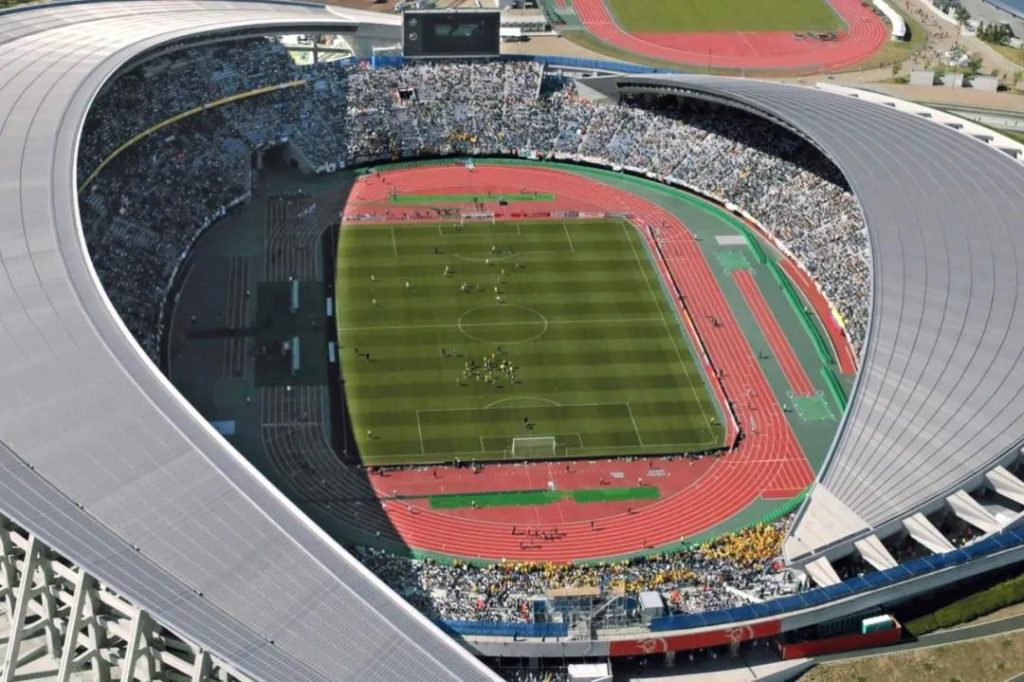
13. Tatsumi Water Polo Centre
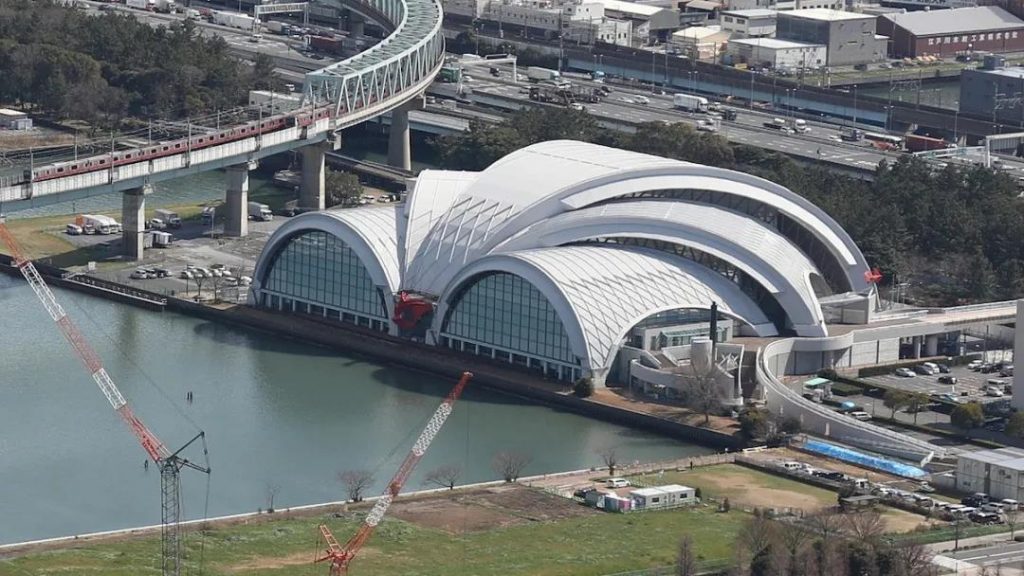
Events: Water Polo
Address: 8-10, Tatsumi 2-chome, Koto-ku, Tokyo
The Tatsumi International Swimming Pool was designed by the Environmental Design Institute of Tokyo Architects and was built in 1993. The water polo competition for the 2020 Olympic Games will be held here.
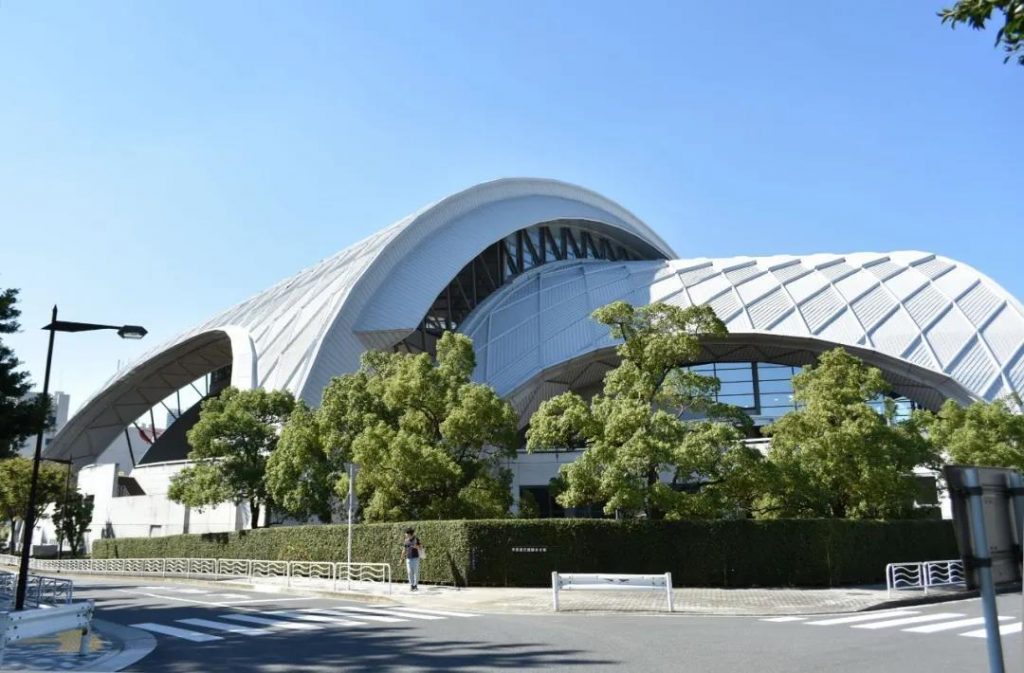
It consists of five circular roofs, and it looks like a bird flying on the water from a distance. The scarlet sculpture created by Aijiro Wakita has become the finishing touch of this swimming pool.
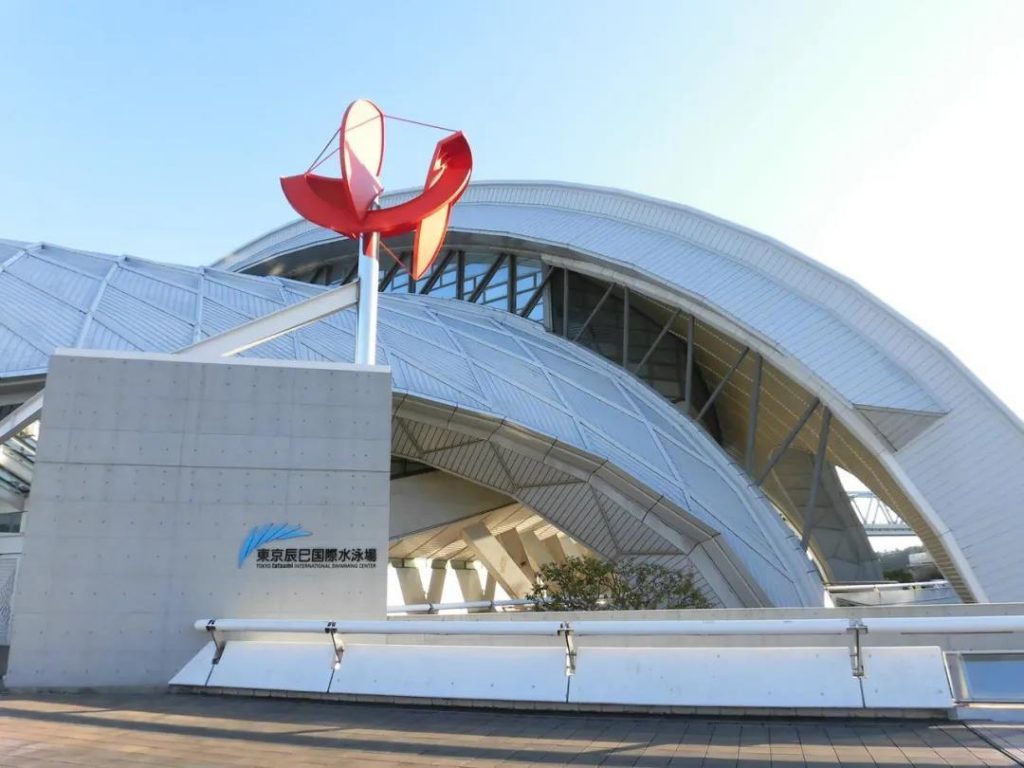
The interior space is wide and open, and the curved ceiling is supported by the steel structure.
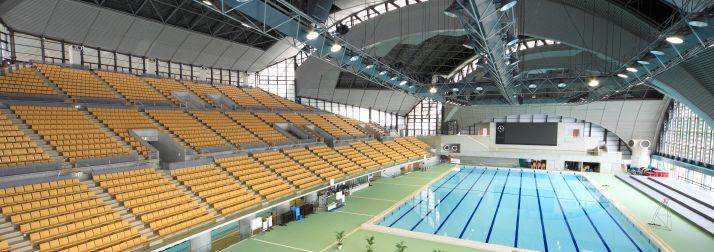
14. Sea Forest Waterway
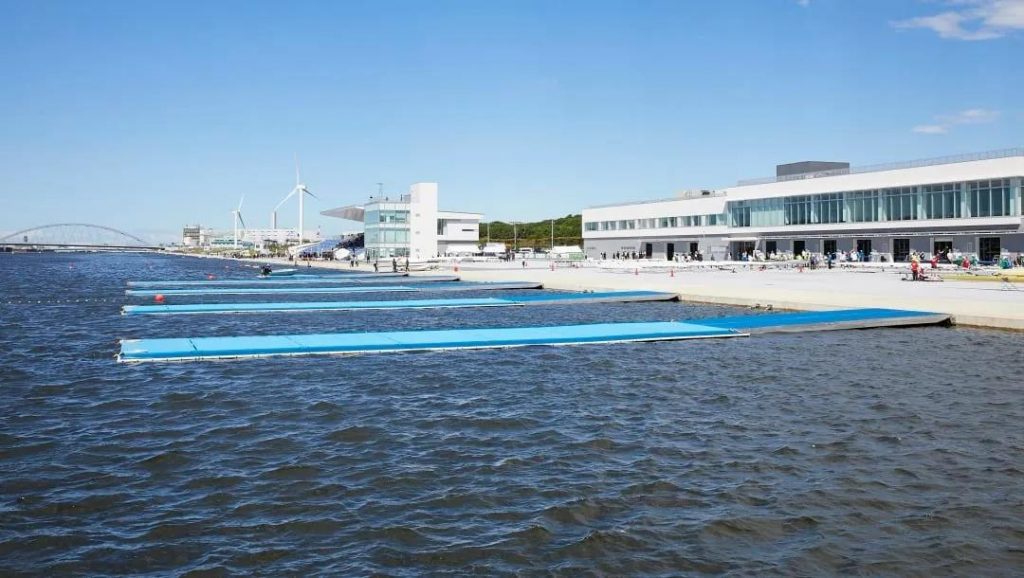
Events: Kayaking (still water), Rowing
Address: Koto-ku, Tokyo, Qinghai Sanchome Jixian
The Sea Forest Water Arena is a competition venue located in Tokyo Bay, used for canoeing and boating during the Olympic Games. It was officially opened in June 2019.
The track is 2335 meters long and 198 meters wide. There are 8 water channels with a width of 12.5 meters. In addition, sluices and pumps to control the water level are installed at both ends of the competition route, so that there is no need to worry about excessive waves in the arena. The venue has a 2,000-seat grandstand and a temporary grandstand that can accommodate more than 14,000 people during the Olympics. The huge pergola at the top of the stands stretches forward to shield the audience from the sun.
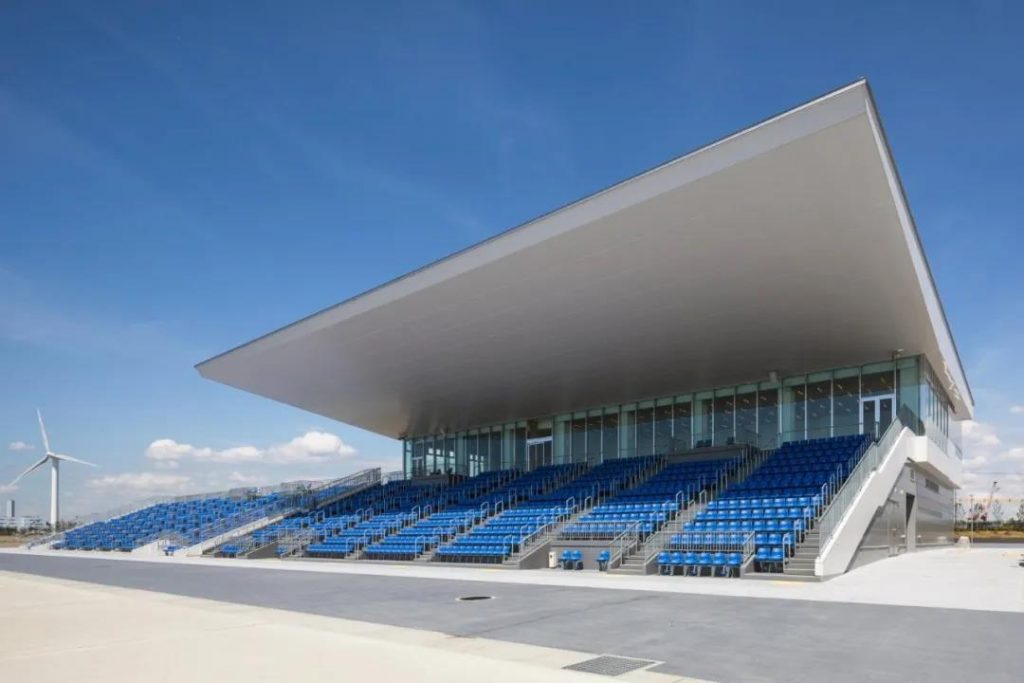
After the Tokyo Olympics, it will be used as an aquatic center for holding international events or training.
15. Oi Hockey Stadium
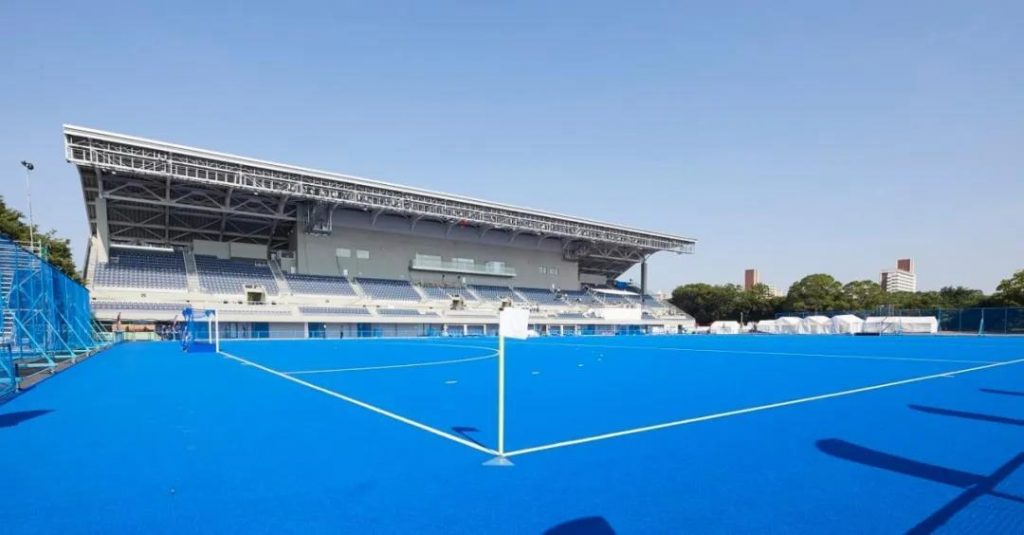
The Oi Hockey Stadium is built in the Ocean Park of Oi Wharf. It is the world’s first synthetic hockey field. The blue “turf” is made by APT and is a countertop called Poligras Tokyo GT. More than 60% of the functional fibers used in manufacturing are renewable raw materials such as sugar cane. Other sustainability features include the shock-absorbing pads under the surface, which are made from recycled rubber.
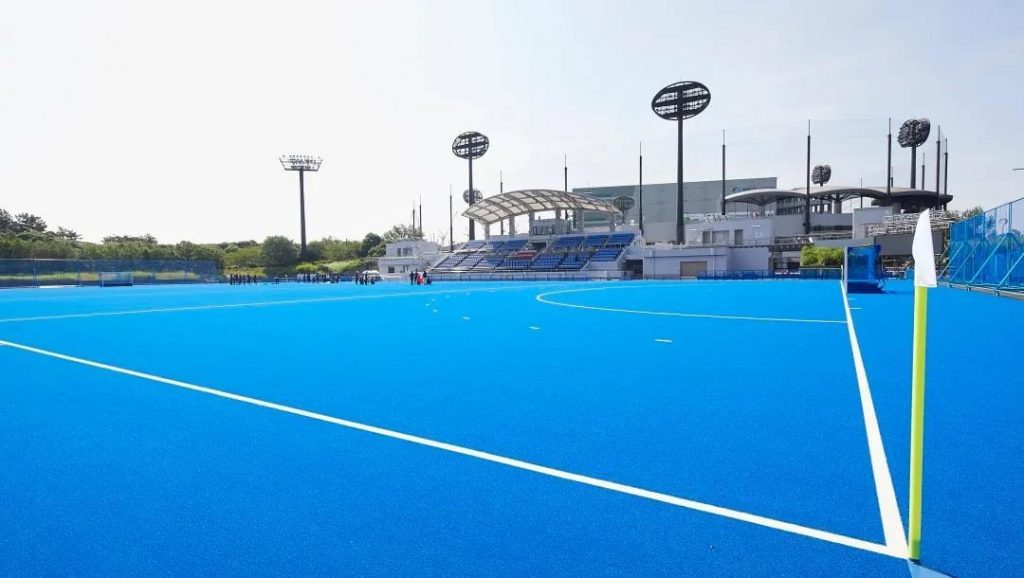
The venues for the 2020 Tokyo Olympic Games are centered around Tokyo, most of which are concentrated in Tokyo Bay.
